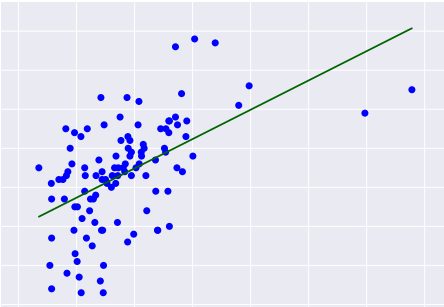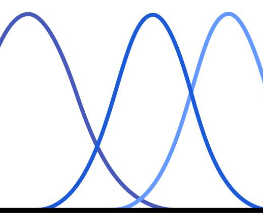- by Jimmy Fisher
- Oct 19, 2024
Decision Tree Classifiers
- By Jimmy Fisher
- Oct 19, 2024
- in Techniques

Decision tree classifiers are popular in machine learning for both classification and regression tasks. They use a rule-based, hierarchical structure that makes their decision-making process straightforward and interpretable, which contributes to their widespread use in practical applications.
A decision tree classifier is a model that makes predictions
based on a series of decision rules derived from the data's features.
- Structure:
It consists of nodes representing decisions, starting from a root node
branching out into leaves, which indicate the ultimate prediction or
classification outcome.
- Splitting
Criteria: The decision-making process at each node uses metrics like
Gini impurity, information gain, or variance reduction to determine the
optimal feature split.
- Overfitting
Solutions: While effective, decision tree models can overfit on training
data, capturing more noise than abstracted signal from the data.
Techniques like pruning, controlling tree depth, or employing ensemble
methods like Random Forests are utilized to combat this issue.
Example Python Code
Categorical Data: Classification Task
In this example, we load the Iris dataset, split it into training and testing sets, and then train a random forest classifier. The model's performance is evaluated using a classification report and accuracy score.
from sklearn.datasets import load_irisfrom sklearn.tree import DecisionTreeClassifierfrom sklearn.model_selection import train_test_splitfrom sklearn.metrics import accuracy_score
# Load the datasetdata = load_iris()X_train, X_test, y_train, y_test = train_test_split( data.data, data.target, test_size=0.3, random_state=42)
# Train the classifierclf = DecisionTreeClassifier()clf.fit(X_train, y_train)
# Evaluate the performancey_pred = clf.predict(X_test)accuracy = accuracy_score(y_test, y_pred)print(f"Accuracy: {accuracy:.2f}")
from sklearn.datasets import load_iris
from sklearn.tree import DecisionTreeClassifier
from sklearn.model_selection import train_test_split
from sklearn.metrics import accuracy_score
# Load the dataset
data = load_iris()
X_train, X_test, y_train, y_test = train_test_split(
data.data, data.target, test_size=0.3, random_state=42
)
# Train the classifier
clf = DecisionTreeClassifier()
clf.fit(X_train, y_train)
# Evaluate the performance
y_pred = clf.predict(X_test)
accuracy = accuracy_score(y_test, y_pred)
print(f"Accuracy: {accuracy:.2f}")
Continuous Data: Regression Task
In this example, we use the Boston Housing dataset is a classic dataset in machine learning and statistics, often used to demonstrate regression techniques. It contains information collected by the U.S. Census Service concerning housing in the area of Boston, Massachusetts. This dataset is primarily used to predict housing prices based on various features of the neighborhood.
from sklearn.datasets import load_bostonfrom sklearn.tree import DecisionTreeRegressorfrom sklearn.model_selection import train_test_splitfrom sklearn.metrics import mean_squared_error
# Load the datasetboston = load_boston()X_train, X_test, y_train, y_test = train_test_split( boston.data, boston.target, test_size=0.3, random_state=42)
# Train the regressorreg = DecisionTreeRegressor()reg.fit(X_train, y_train)
# Evaluate the performancey_pred = reg.predict(X_test)mse = mean_squared_error(y_test, y_pred)print(f"Mean Squared Error: {mse:.2f}")
from sklearn.datasets import load_boston
from sklearn.tree import DecisionTreeRegressor
from sklearn.model_selection import train_test_split
from sklearn.metrics import mean_squared_error
# Load the dataset
boston = load_boston()
X_train, X_test, y_train, y_test = train_test_split(
boston.data, boston.target, test_size=0.3, random_state=42
)
# Train the regressor
reg = DecisionTreeRegressor()
reg.fit(X_train, y_train)
# Evaluate the performance
y_pred = reg.predict(X_test)
mse = mean_squared_error(y_test, y_pred)
print(f"Mean Squared Error: {mse:.2f}")
The Boston dataset was removed in the latest version of sklearn, but the same below Python code will work if you replace the two instances of 'load_boston' with 'fetch_california_housing' (and, if you want, the name of the dataset variable from 'boston' to something else, like 'california' for example.
from sklearn.datasets import fetch_california_housingfrom sklearn.tree import DecisionTreeRegressorfrom sklearn.model_selection import train_test_splitfrom sklearn.metrics import mean_squared_error
# Load the datasetcalifornia = fetch_california_housing()X_train, X_test, y_train, y_test = train_test_split( california.data, california.target, test_size=0.3, random_state=42)
# Train the regressorreg = DecisionTreeRegressor()reg.fit(X_train, y_train)
# Evaluate the performancey_pred = reg.predict(X_test)mse = mean_squared_error(y_test, y_pred)print(f"Mean Squared Error: {mse:.2f}")
from sklearn.datasets import fetch_california_housing
from sklearn.tree import DecisionTreeRegressor
from sklearn.model_selection import train_test_split
from sklearn.metrics import mean_squared_error
# Load the dataset
california = fetch_california_housing()
X_train, X_test, y_train, y_test = train_test_split(
california.data, california.target, test_size=0.3, random_state=42
)
# Train the regressor
reg = DecisionTreeRegressor()
reg.fit(X_train, y_train)
# Evaluate the performance
y_pred = reg.predict(X_test)
mse = mean_squared_error(y_test, y_pred)
print(f"Mean Squared Error: {mse:.2f}")
Example R Code
Categorical Data: Classification Task
# Load required libraries
library(datasets)
library(caret)
library(rpart)
# Load the dataset
data(iris)
set.seed(42)
# Split the data into training and test sets
trainIndex <- createDataPartition(iris$Species, p = 0.7, list = FALSE)
trainData <- iris[trainIndex, ]
testData <- iris[-trainIndex, ]
# Train the classifier
clf <- rpart(Species ~ ., data = trainData, method = "class")
# Predict on the test data
y_pred <- predict(clf, testData, type = "class")
# Evaluate the performance
accuracy <- sum(y_pred == testData$Species) / nrow(testData)
print(sprintf("Accuracy: %.2f", accuracy))
After loading the data, the createDataPartition function from the caret package splits the data, after which rpart is used to create a decision tree model similar to Python's DecisionTreeClassifier. Finally, we make predictions on the test data, comparing predicted values to actuals in testData$Species.
Continuous Data: Regression Task
# Load required libraries
library(MASS) # For the Boston dataset
library(caret) # For train/test split
library(rpart) # For Decision Tree Regressor
# Load the dataset
data("Boston")
set.seed(42)
# Split the data into training and test sets
trainIndex <- createDataPartition(Boston$medv, p = 0.7, list = FALSE)
trainData <- Boston[trainIndex, ]
testData <- Boston[-trainIndex, ]
# Train the regressor
reg <- rpart(medv ~ ., data = trainData, method = "anova")
# Predict on the test data
y_pred <- predict(reg, testData)
# Evaluate the performance
mse <- mean((y_pred - testData$medv)^2)
print(sprintf("Mean Squared Error: %.2f", mse))





